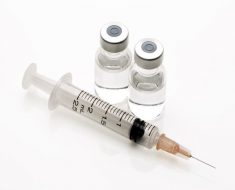Several public health interventions, including social distancing, business restrictions, and limitations on elective healthcare, among others, have successfully slowed the rate of new coronavirus disease 2019 (COVID-19) cases. Nevertheless, these nonpharmaceutical interventions have had a considerable impact on both the mental and social health of many around the world, thus inevitability affecting major life decisions.
A new JAMA Network Open study finds that in the area of reproductive planning, the COVID-19 pandemic led to a reduction in plans to become pregnant, which will reflect future societal changes.

Study: Comparison of Pregnancy Preferences Preceding vs Year 1 of the COVID-19 Pandemic. Image Credit: Natalia Deriabina / Shutterstock.com
Introduction
Pandemic-related interventions and the overwhelming burden of healthcare systems in many countries led to reduced access to reproductive care, such as infertility treatments and antenatal care.
Other major changes that were reported during the pandemic included fears about contracting the severe acute respiratory syndrome coronavirus 2 (SARS-CoV-2) and consequent severe illness or death, as well as loss of employment, anxiety about the future, and financial instability.
Prior research in some developed populations has demonstrated that the desire to become pregnant declined or its fulfillment was delayed during the pandemic. Moreover, a smaller group said they were more interested in pregnancy during this period as a result of various factors such as a changed perspective on life, having more time away from work to raise a child, and a desire for changes that would bring happiness.
However, such research has often been qualitative or lacked accurate instruments to measure pregnancy-related emotions. The current study shifts from a binary view of trying or not trying to become pregnant or desiring or not desiring more children and instead focuses on nuanced desires about pregnancy.
About the study
The current cohort study compared the desires people had for pregnancy over the year beginning from March 2019 onwards and the next year, which was defined as ‘Year 1’ of the pandemic. The data was acquired from the Attitudes and Decisions After Pregnancy Study, which is an ongoing observational study that also investigated how pregnancy decisions were made and how pregnancy affected the health and life of people.
All participants were from Arizona, Texas, and New Mexico centers for primary care and reproductive health. Only English/Spanish-speaking individuals between the ages of 15 and 34 were approached.
All study participants were physically able to become pregnant, had intercourse over the last three months with a male, and were not pregnant at the time of the study unless they had an appointment for an abortion.
The researchers hypothesized a reduced pregnancy desire as lockdown mandates were first implemented and two successive COVID-19 waves occurred.
Study findings
The Desire to Avoid Pregnancy (DAP) Scale, which is a validated instrument that allows for ambivalent preferences in terms of cognitive desires, feelings, and future fears or expectations, was used. DAP limits choices within a short time period, as such preferences change with the situation.
 Graphs show population-averaged DAP scores over the year before and year 1 of the COVID-19 pandemic. Time (in quarters) is on the x-axis; DAP score (range, 0-4, with 4 indicating higher desire to avoid pregnancy) is on the y-axis. The 3 hypothesized changes points are indicated with dashed lines (shelter-in-place [April 1, 2020], 1 month into the summer surge [July 1, 2020], and 1 month into the fall surge [November 1, 2020]). Panel A presents DAP score trajectory for the study sample, as a whole, with 95% CIs shown with shading. Panel B presents DAP score trajectories by age group from an interaction model. Panel C presents DAP score trajectories by parity from an interaction model.
Graphs show population-averaged DAP scores over the year before and year 1 of the COVID-19 pandemic. Time (in quarters) is on the x-axis; DAP score (range, 0-4, with 4 indicating higher desire to avoid pregnancy) is on the y-axis. The 3 hypothesized changes points are indicated with dashed lines (shelter-in-place [April 1, 2020], 1 month into the summer surge [July 1, 2020], and 1 month into the fall surge [November 1, 2020]). Panel A presents DAP score trajectory for the study sample, as a whole, with 95% CIs shown with shading. Panel B presents DAP score trajectories by age group from an interaction model. Panel C presents DAP score trajectories by parity from an interaction model.
Of the approximately 630 participants, the mean age was 25 years. Half of the study participants were Latinx, a third White, and the rest of other races. About half had never been pregnant, a third had other children, and the rest were experiencing their first pregnancy.
The mean DAP score was 2.3, with a slightly greater desire to avoid pregnancy. Over 60% of participants said with varying degrees of conviction that they did not want to become pregnant during the upcoming year, whereas a third indicated that they would find it difficult to raise a baby during this time. About 20% of participants felt excited at the thought of becoming pregnant in the next quarter.
The pre-pandemic year had a slightly lower DAP score, with a fall of 0.06 points per quarter. With the onset of COVID-19, this leveled out during the first wave of cases in 2020, followed by a small rise in cases by almost the same degree. After cases surged again in fall 2020, the DAP scores began to fall again by 0.11 points per quarter.
DAP scores varied significantly between individuals throughout this period, with age and parity playing a major role. The type of couple or food insecurity did not appear to interfere with this preference.
Instead, younger couples between the ages of 15-24 years were more opposed to pregnancy than those between 25-34 years of age, with DAP scores declining by twice as much over the 16 months before the first wave from -0.08 to -0.04 points per quarter.
During the first wave of the COVID-19 pandemic, DAP scores among the younger group increased by 0.18 points per quarter. The decline in the older group did not change significantly during this time.
Among women who had never conceived or were pregnant for the first time, DAP scores declined to a greater degree than among multiparous women at more than double the rate. This reduction was reversed after this first wave among the former; however, no significant flattening was reported in multiparous women.
Implications
The first wave of the COVID-19 pandemic in 2020 was associated with a significant reduction in the desire for pregnancy. This was uniformly associated with all groups of women, across social and demographic characteristics.
The outcome led to a greater desire to avoid pregnancy among younger women and those with none or one pregnancy. However, among older women between the ages of 25-34 years, as well as multiparous women, there was no change in pregnancy desire.
Before the pandemic, women of reproductive age experienced a reduced desire to have a child as they grew older, focusing instead on raising their children. The decline in pregnancy desire during the pandemic is particularly prominent among those who had only one or no children than among those who had two children or more already. Younger women were particularly less likely to plan a pregnancy at this time, perhaps because they felt they had more time left than older women in the reproductive period.
Women became less open toward pregnancy during the first wave, thus corroborating earlier research. However, this trend returned to that of previous years, where women leaned towards wanting a baby in the next year.
Interestingly, the 2020 fall surge in COVID-19 cases occurred simultaneously with a rise in DAP scores to pre-pandemic levels.
As it became clear that the pandemic would be a long-standing public health emergency, individuals returned to their original trajectories.”
This tendency toward a declined desire in pregnancy, followed by a subsequent rise, is common in many natural and manmade crises. This may or may not be associated with birth rates, as all individuals are not able to have or postpone conception successfully. Understanding these trends could help plan for better reproductive care in the future.
- Rocca, C. H., Parra, M., Muñoz, I., et al. (2022). Comparison of Pregnancy Preferences Preceding vs Year 1 of the COVID-19 Pandemic. JAMA Network Open. doi:10.1001/jamanetworkopen.2022.20093.
Posted in: Medical Research News | Women's Health News | Disease/Infection News
Tags: Abortion, Anxiety, Baby, Children, Conception, Coronavirus, Coronavirus Disease COVID-19, Food, Healthcare, Infertility, Pandemic, Pregnancy, Primary Care, Public Health, Reproductive Health, Research, Respiratory, SARS, SARS-CoV-2, Severe Acute Respiratory, Severe Acute Respiratory Syndrome, Syndrome, Women's Health

Written by
Dr. Liji Thomas
Dr. Liji Thomas is an OB-GYN, who graduated from the Government Medical College, University of Calicut, Kerala, in 2001. Liji practiced as a full-time consultant in obstetrics/gynecology in a private hospital for a few years following her graduation. She has counseled hundreds of patients facing issues from pregnancy-related problems and infertility, and has been in charge of over 2,000 deliveries, striving always to achieve a normal delivery rather than operative.
Source: Read Full Article





